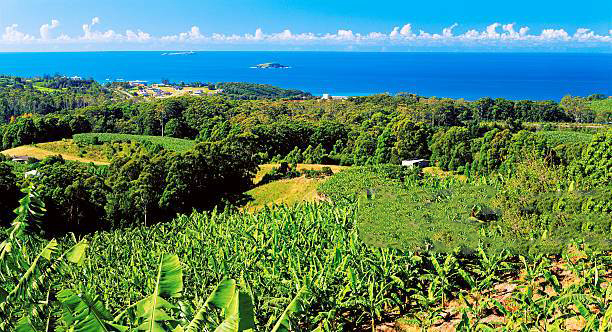
Modern farming techniques have left residues in the soil from a variety of pesticides and chemicals. These chemicals threaten public health increasingly as urban growth overtakes former agricultural lands. Today there are thousands of hectares of land that have been adversely affected by agricultural practices. Take, for example, the potentially hazardous pesticide residues found in former and current banana plantations. Other intensive agricultural industries that might leave contamination include cotton, sugar cane, vegetable gardens, fruit orchards, potatoes, and corn. Although contamination problems are usually most prevalent in rural areas, problems are also expected around urban fringes where there is intensive small cropping.
Is my land contaminated?
The first step in investigating whether land is likely to be contaminated is to find out what chemicals have been used on the land. This information will usually come from NSW Agriculture and/or local councils. These authorities will know the principal industries and types of agriculture that have operated in the region, what chemicals may have been used, and (in some cases) where the industries and contaminants may be found. Current and past land users should also be interviewed for this information.
Although it is vital to get local information about contaminants, we can make generalisations about some contaminants because we know they persist in the environment and were widely used in this State. These generalisations are discussed below.
Types and applications of pesticides
Two broad divisions of pesticides have been used in agriculture:
- inorganic pesticides,for example, arsenical and mercurial compounds
- organic pesticides,for example, organochlorines or OCPs (more correctly termed chlorinated hydrocarbons), organophosphates or OPs (more correctly termed phosphate hydrocarbons), carbamates, synthetic pyrethroids, and growth regulators.
As an indication of the variety of chemicals that might be found, there are currently:
- 93 products registered for use on sugarcane
- 96 products registered for use on bananalands
- 157 products registered for use on cotton
- 223 products registered for use on cereals
- 40 products registered to control ectoparasites on cattle.
For more information on assessing banana plantations for urban development, visit the Environment Protection Agency or download Guidelines for Assessing Banana Plantation Sites.
If you would like your soil tested, contact us today.
